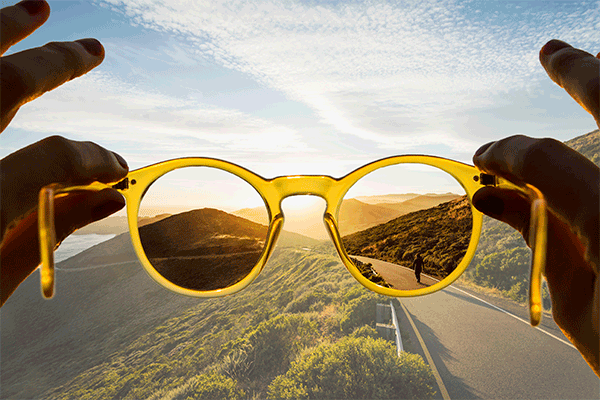The color and tint of the lenses can affect how our eyes adjust to outside conditions, while the frames can restrict our field of vision. In other words, our everyday shades may not be the best option when we get behind the wheel.
“You probably wouldn’t wear the same pair of shoes to go out dancing and jogging; you have different shoes for different tasks,” says Dr. Karl Citek, a professor of optometry and a member of the American Optometric Association. “It’s the same with sunglasses.”
Driving during the day means facing the sun’s glare, which can cause our eyes to squint and become strained and fatigued. Even more dangerous is the bright light reflected off the road’s surface and other vehicles. “We refer to that as ‘veiling glare,’ and it obscures the object you’re looking at,” says Citek. “Technically, for that brief moment, you’re blinded.”
The right shades can help reduce the driving risks associated with glare, and can lessen sunlight exposure and limited peripheral vision. Here’s what Citek recommends that you look for.
Consider Weather And Geography
Before you buy, think about what your usual commute looks like. Places with many overcast days, or environments with heavy shade, might not require the same degree of lens darkness that driving directly into a sunrise or sunset might. Geography may play a role, too—some regions have more intense sunlight than others, which means that a pair of sunglasses might be an all-day accessory, especially for those with light hypersensitivity.
